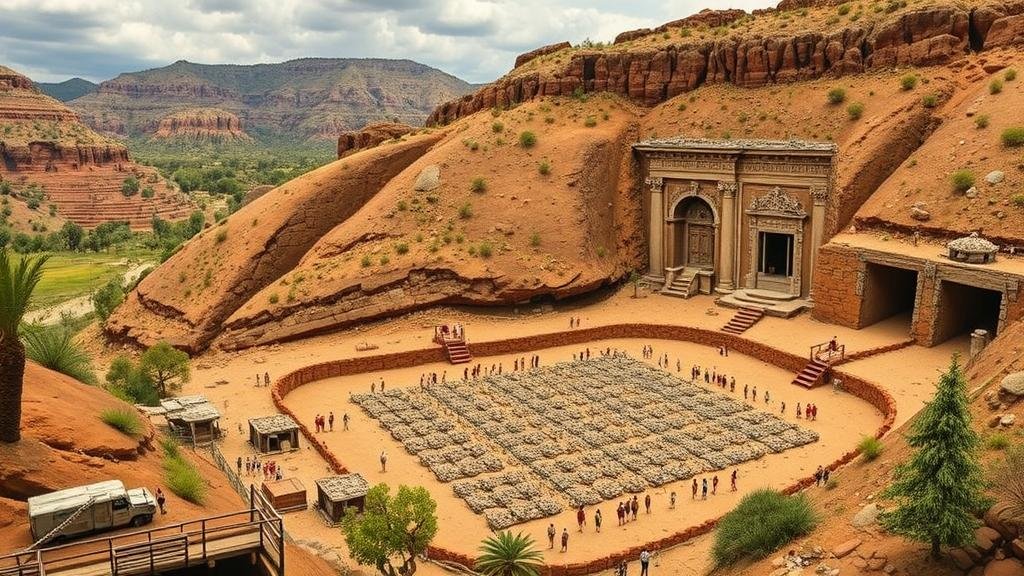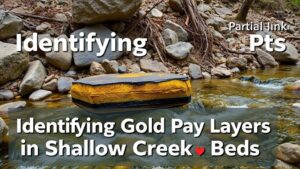How Ancient Cultures Identified High-Yield Ore Deposits Using Trial Mining
How Ancient Cultures Identified High-Yield Ore Deposits Using Trial Mining
Ancient cultures developed various ingenious methods to identify and extract high-yield ore deposits long before the advent of modern geology and mining technology. Through techniques such as trial mining, these civilizations were able to assess the mineral prospects of specific locations and maximize their resource extraction capabilities. This article explores the methodologies employed by ancient cultures and illustrates their significance in historical mining practices.
Understanding Trial Mining
Trial mining refers to the preliminary extraction of ore in small quantities to evaluate a deposit’s potential viability. This method involves the systematic excavation of rock or soil to test the quality and abundance of mineral resources. Cultures such as the Romans, Egyptians, and indigenous peoples utilized trial mining, enabling them to make informed decisions about further development and investment in mining operations.
Methods of Identification
The process of identifying high-yield ore deposits comprised several key practices:
- Surface Sampling: Ancient miners often conducted visual inspections and sample collections of surface outcrops. They looked for signs such as color variations, mineralization, and unusual rock formations, which could indicate the presence of valuable minerals.
- Trial or Test Pits: Communities excavated small test pits and trenches to gather information about the subsurface geology. excavation would typically extend to the depth where significant mineralization was suspected.
- Observation of Weathered Zones: Ingenuity was showcased in how miners observed the weathering effects on rocks. Often, metals were more accessible in weathered zones, motivating miners to extract samples from these areas.
Case Studies of Ancient Civilizations
Numerous ancient civilizations provide remarkable insights into trial mining practices, shedding light on how they efficiently located ore deposits.
The Romans
The Roman Empire was renowned for its extensive mining operations. Miners commonly employed trial mining techniques in regions rich in resources such as gold and silver. In Spain, for example, Romans excavated extensive test pits in the RÃo Tinto region, which led to the discovery of significant copper and silver deposits. Statistical records suggest that the Romans extracted over 7,000 tons of silver from this area, a testament to their effective evaluative methods.
The Egyptians
In ancient Egypt, a systematic approach to mining was evident, particularly in the extraction of gold from the Nubian Desert. Egyptian miners utilized trial shafts that extended down to 15 meters. success of these mining operations can be attributed to trial mining, which allowed them to test various veins and adapt their extraction strategies accordingly. Estimates indicate that ancient Egyptians mined at least 1,200 tons of gold throughout their history, largely attributed to their effective trial mining practices.
Indigenous Practices
Many Indigenous groups utilized trial mining techniques adapted to their local environments. For example, the Native Americans in the Southwestern United States practiced small-scale exploration, often focusing on alluvial deposits. dug strategic pits and trenches to evaluate the yield of trade-worthy minerals such as turquoise and copper through trial mining, demonstrating a keen understanding of their surroundings and ecological systems.
Challenges and Limitations
Despite the effectiveness of trial mining, ancient cultures faced numerous challenges:
- Geological Variability: The inconsistency of mineral deposits, often due to geological processes, made the success of trial mining unpredictable.
- Technological Constraints: Limited tools and techniques inhibited the depth and breadth of mining efforts, with many civilizations unable to reach deeper, richer deposits.
- Environmental Factors: Natural events such as heavy rains or floods could disrupt mining operations, particularly in regions with unstable terrain.
Conclusion and Takeaways
Trial mining played a pivotal role in helping ancient cultures identify high-yield ore deposits, laying the groundwork for modern mining practices. Their methods, such as surface sampling, test pits, and keen observation, reflect a deep understanding of geology and resource management.
In modern contexts, the lessons gleaned from these ancient practices underscore the importance of preliminary assessments before large-scale extraction operations. By embracing a similar trial mining philosophy, contemporary mining companies can optimize resource utilization and minimize environmental impact.
As we delve into mining practices today, recognizing the historical significance of trial mining serves not only to honor ancient ingenuity but also to inform sustainable practices for future generations.


